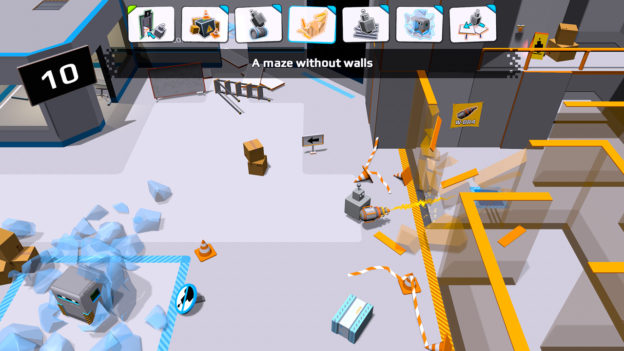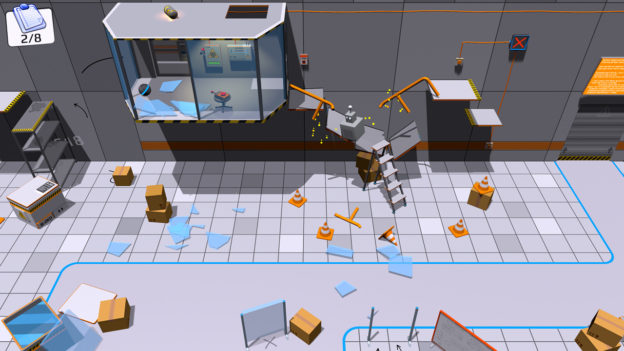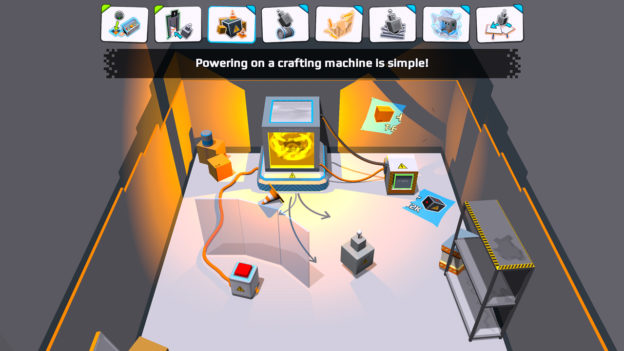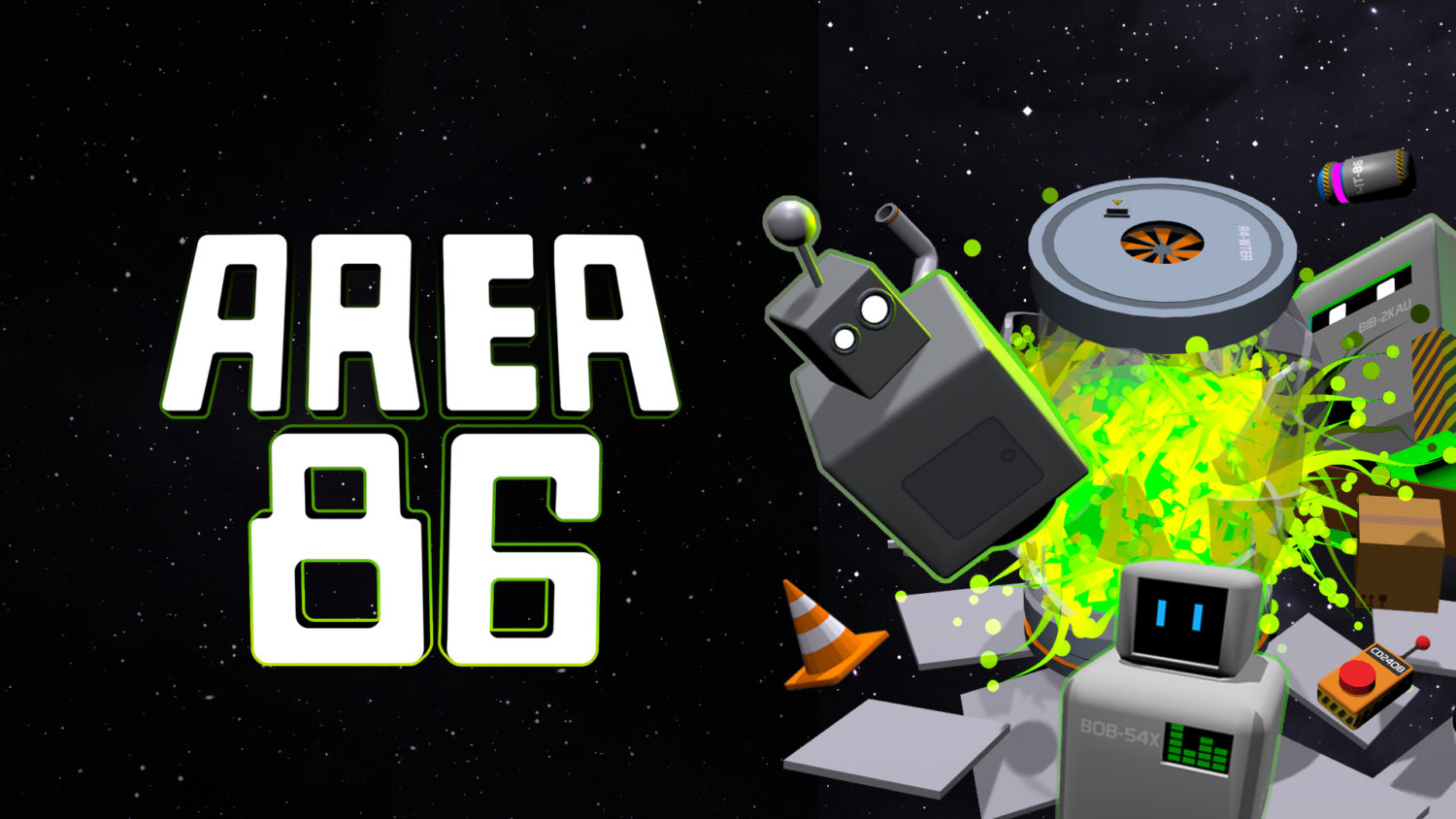Anyone who has had the opportunity to partake in an escape room with friends will feel slightly familiar with the concept behind the indie puzzler Area 86. While that concept alone will certainly bring intrigue alongside a fun use of physics and brain-teasing set-ups, the sum of all parts in Area 86 makes it feel challenging yet lacking overall.

In this physics-based puzzle game, you control a little box-shaped robot who not only moves fast on the ground but can do some slick parkour moves in the process. A rogue A.I. has started to terrorize a space station, and our little robot companion must solve their way through various rooms to stop it. Essentially a straightforward, not-so-deep of a plot, but that’s not what you are here for anyway. What you are here for is to guide your robot friend in what constitutes the sci-fi equivalent of a wacky escape room with a multitude of options. Plus, there is the use of physics, which will make or break the way you solve your way through each level.
As you break free from the wires connecting your robot body in the first level, you are presented with various tasks to complete in an isometric area. Some of these are called challenge tasks, which are optional. The main tasks you have are needed to escape to a varied portion of the space station, but much like any escape room, these puzzles aren’t spelled out for you in full. That is, these tasks are essentially hints.

When you bring up the list of tasks, each is accompanied by a picture with a short description for you to solve on your own. By examining the small picture and description, you will need to use the items scattered throughout the room to figure out the exercise. Some of these range from a picture with several items that need to be placed in a certain space or a vague action you must do, such as heating a room or reconnecting wires to open a door to an office.
While some of these hints are easy to solve, others will have you thinking about your surroundings. That is, you will find specific drawings on the floor, or even the ground can clue you in on how to solve a task. These hints are the most important and require some tinkering around to get through the level with ease. I will admit, there were times where I was stumped on a specific task only to see the wheels finally turn in my head when I uncovered a clue that was obscured by a set of shelves. Moments like this are what make Area 86 a fun experience once you are also accustomed to the game’s physics.

Speaking of physics, the mechanics here are vital to helping you solve a certain task. In particular, one includes where you must grab and throw items into a converter machine to produce a specific item needed for completing another task. These physics-based challenges can be funny to see unfold, but they can also be frustrating to pull off. At times, trying to manage your throwing ark with items or even balancing yourself on top of a stack of boxes used as a platform can be met with a lot of trial and error. While there are multiple ways to complete each task, there were a few instances of restarting the level because either the physics of a board or shelf blocking an object or doorway would not comply with any nudge. Regardless, the physics-based gameplay adds some neat touches while being a bit wonky in certain sections.
Even as you get through exercise after exercise with the mere satisfaction of finally figuring out that sole puzzle that would have you stumped, the content in Area 86 is still sadly lacking. Aside from wanting to complete all the main and optional challenges or complete each level at a faster time, the replayability here is limited to a handful of levels to dive into. While this bare-bones design does sour the experience, the entire gameplay idea in Area 86 does present you with some challenging fun here and there. Just don’t get into expecting a lot more when you do finally escape.
Review: Area 86 (Nintendo Switch)
Fair
Despite lacking in post-game content, there is still just enough in Area 86’s varied escape room challenges to warrant a quick look.


